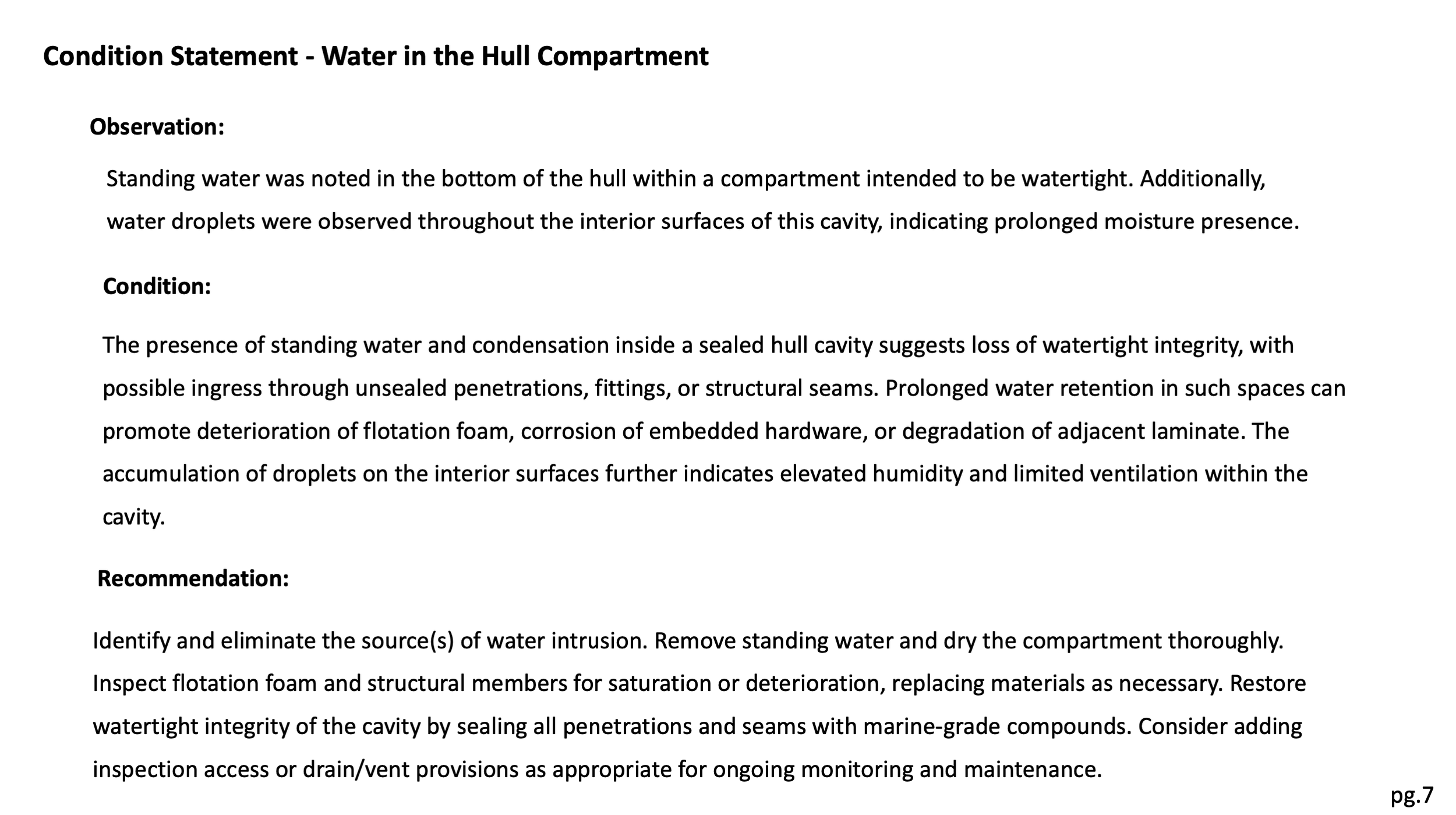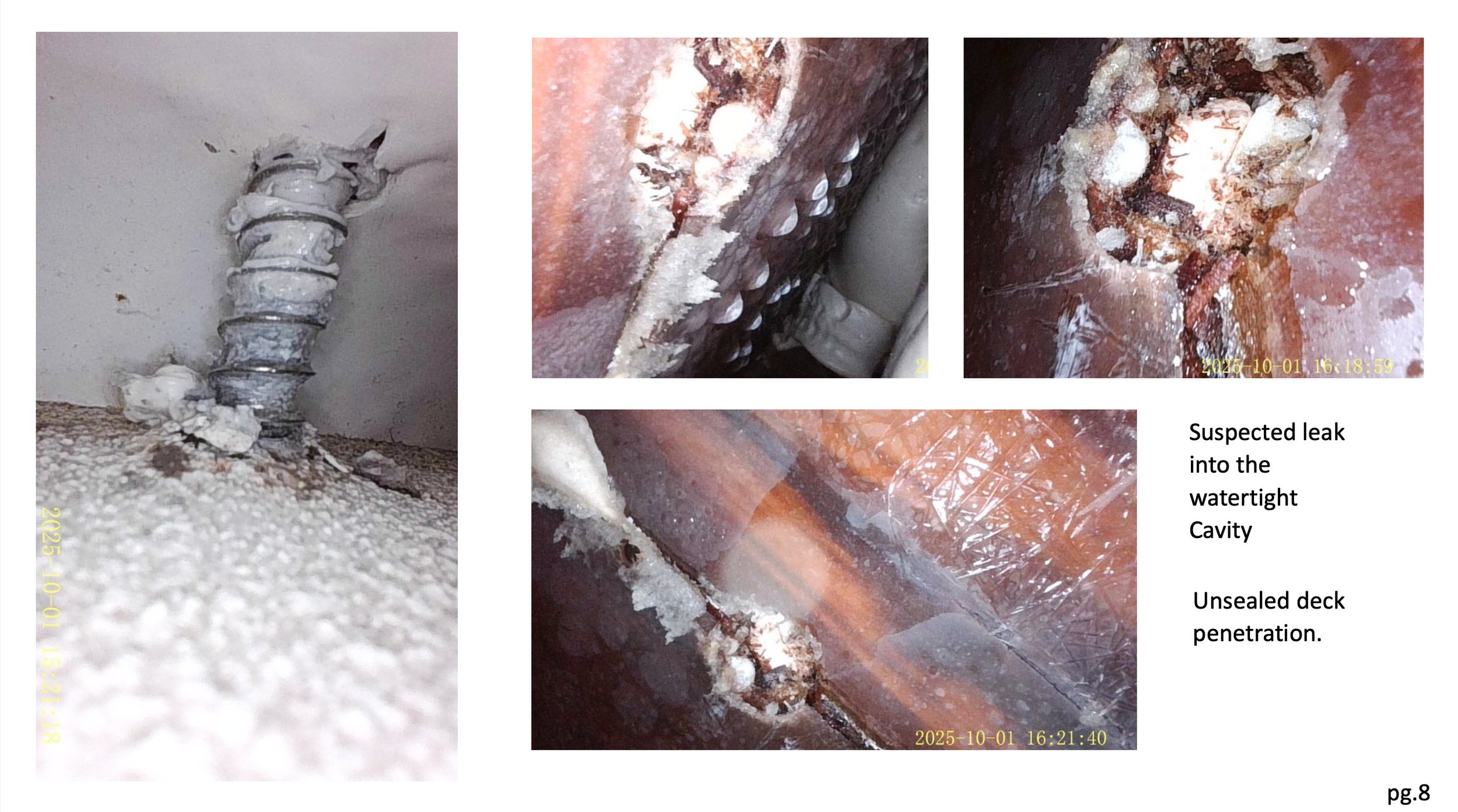“The Leak They Tried to Ignore”
Inside the story of a Parker boat owner, a negligent dealer, and a marine surveyor who uncovered the truth.
When the owner of a brand-new Parker boat discovered water collecting inside his hull, he did what any responsible boater would do — he called the dealer. What followed, however, wasn’t reassurance or resolution, but a pattern of avoidance. The dealership claimed to have found and fixed the source, yet weeks later, the problem persisted. Instead of standing behind their product, management deflected, leaving the owner to navigate the issue alone. By the time I was brought in to investigate, what appeared to be a simple warranty concern had become a deeper story of neglect — one that revealed how easily a small leak can expose a much larger failure in accountability.
The Investigation
Before I was called to the case, the situation had already taken several concerning turns. The dockmaster at the owner’s marina first noticed something no boater wants to hear — the vessel was listing heavily to starboard. The owner immediately contacted the dealership, which, to their credit, responded quickly. Upon inspection, they found a significant amount of water in the bilge and discovered that the batteries were discharged, leaving the bilge pumps inoperative.
The boat was hauled from the water, the bilge drained, and electrical service restored. With the pumps running again and no obvious structural damage visible, the dealer attributed the incident to a combination of heavy rainfall and the dead batteries. They inspected the hull, found no leaks or cracks, and then relaunched the vessel. But the list persisted.
Still seeking answers, the dealership brought the Parker back to their facility for a more thorough look. This time, they discovered approximately 45 gallons of water trapped in a starboard-side, watertight compartment beneath the deck — a cavity designed to remain permanently dry and filled with flotation foam. They drained the compartment, cut an access hatch for inspection, and re-bedded the fasteners for the second helm station, suspecting that it was the source. The boat was then returned to its slip at the marina.
Weeks later, upon follow-up, new water was again found — this time inside the second helm station and within the same watertight cavity. The recurrence of water intrusion, despite prior repair claims, marked the point where the owner sought an independent, professional investigation. That’s when I was called in to uncover the true source of the problem.
My Inspection and Findings
When I arrived at the vessel, I approached the case with a simple objective: to verify what the dealership claimed to have fixed — and determine why the problem persisted. The owner’s frustration was understandable; the boat was new, and yet it had already been pulled, drained, and “repaired” without resolution.
I began by conducting a detailed inspection of the helm station, deck fittings, and structural seams in the surrounding area. Using visual inspection and a borescope, it became apparent that there was still active water presence within the starboard watertight compartment. This was the same compartment previously drained by the dealership, yet moisture levels indicated continued intrusion and saturation of the underlying flotation foam.
Through the newly cut access hatch, I examined the foam and interior cavity. The foam showed signs of waterlogging and early hydrolysis — a chemical breakdown that occurs when closed-cell foam remains wet for extended periods, compromising both buoyancy and structural support. The source of intrusion appeared to originate near the second helm station fasteners and surrounding deck penetrations..
In summary, the previous repair did not resolve the underlying issue. The watertight compartment was compromised, the foam had absorbed water, and the vessel’s list remained due to the trapped water weight to starboard. Upon closer inspection, there was no clear evidence that the dealer had properly located or sealed the actual source of intrusion. Fasteners and seams near the helm area showed inconsistent bedding — some were resealed with excess compound, while others remained untouched. It appeared the dealer had performed only superficial work, addressing symptoms rather than the root cause.
The findings were clear: the boat had never been properly repaired. The water ingress continued, the foam was compromised, and the dealer’s assurances were unfounded.
Below you will find some slides from the report that was presented, and eventually a summary of the resolution.
Resolution and Recommendations
Following my inspection, I compiled a comprehensive report documenting all findings, including photographs and detailed notes on the condition of the foam and structural cavities. The evidence left little room for doubt — the problem had not been properly addressed, and the water intrusion was ongoing.
I advised the owner to directly contact the president of the dealership, supplying them with my independent report so the manufacturer could see the technical facts for themselves. My recommendation was clear:
Cut open and remove the cockpit deck section over the affected compartment, exposing the saturated foam.
Remove all deteriorated foam and allow the compartment to completely dry. Use heat-assisted or dehumidified methods to achieve a moisture content <15% in the surrounding laminate before resealing.
Inspect all inner laminate surfaces, stringer walls, and bonding interfaces for signs of delamination or microbial decay (mildew)
Inject or pour new USCG-approved, two-part, closed-cell polyurethane foam to the specification used initially by Parker Offshore.
Close the compartment with a new fiberglass laminate matching the original layup schedule.
Finish with Parker's non-skid deck surface to factory appearance and water-tightness.
Reinstall the Helm to deck joint using marine-grade bedding compound.
Fasteners should be installed through countersunk, epoxy-sealed pilot holes to prevent capillary intrusion per ABYC H-27.6.1
Conduct a controlled hose test or flooding test to verify zero water ingress.
Provide the owner with written confirmation that the buoyancy compartment has been restored to its factory condition, including the type of foam used, sealing compounds, and the results of the QC test.
Locate and repair the leak inside the pilot house cabin, then restore it to its original factory condition.
To the dealership and Parker’s credit, they reviewed the documentation seriously and began evaluating a proper solution. However, the burden should never have fallen on the customer to prove what should have been verified by the selling dealership from the start.
This case stands as a reminder that even reputable brands can be undermined by poor service practices. In the marine industry, accountability doesn’t end at the sale — it extends through every level of after-care and warranty support. Water intrusion, especially in sealed flotation cavities, is never a minor concern; it demands investigation, not assumption.
For owners, the takeaway is simple: when something doesn’t feel right, trust your instincts — and get it inspected by an independent professional. A marine surveyor’s role is not only to assess vessels, but also to protect owners from the consequences of incomplete or negligent work.
In this case, persistence paid off. The truth surfaced, the evidence was documented, and one owner’s vigilance helped ensure that a problem “they tried to ignore” couldn’t stay hidden any longer.


















